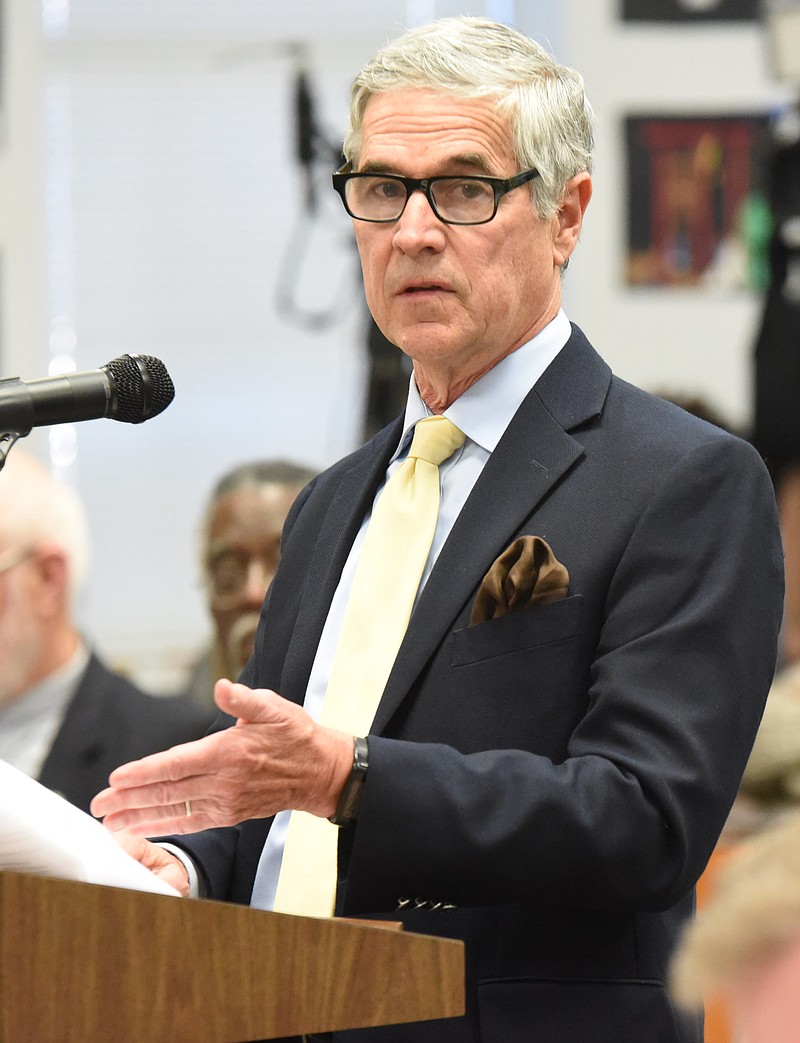In the early 1970s, the cure for segregated schools, especially in the South, was busing - taking students out of their neighborhood schools and busing them across town to a different school to achieve a better racial balance at all schools.
Most public educators and sociologists, if they're honest, will say the effort was a miserable failure. It physically desegregated certain school systems, as was the requirement of the U.S. Supreme Court Brown v. Board of Education decision a decade and a half earlier, but it also prompted the opening of many now-thriving private schools and was the reason many school districts virtually resegregated over time as families moved to attend better schools.
In 2018, no one is calling for busing as a solution to resegregated schools. But the local NAACP, in plans it gave the Hamilton County Board of Education Thursday night, said the school district now should undergo socioeconomic desegregation.
The threat is only implied, but the implication is that a lawsuit could be filed if the school district fails to achieve that diversity.
The NAACP's plans, developed privately over two years while other local groups such as Chattanooga 2.0 and UnifiEd worked publicly on strategies to make positive changes in the school district, propose a type of open enrollment system "that would mandatorily reassign students to achieve socioeconomic desegregation."
That's not quite as threatening as it sounds because it would allow students in a district school to stay in that school if they chose and would allow siblings in lower grades to attend the same high school, for example, of a sibling already there.
The NAACP proposes that the school board spend (or find grants to pay) more than a half million dollars to bring in experts at $150 an hour to develop more specific plans for the district. No cost estimates were provided on how much it would cost the district to implement fully any desegregation proposals ultimately pursued.
Hamilton County Superintendent Dr. Bryan Johnson, perhaps in an effort to blunt the controversy of the new plans and perhaps with the idea of synthesizing the group's plans with ideas already being discussed publicly, has directed the district to launch an equity task force next month.
In offering its plans, the NAACP contends the school board and school district have intentionally kept the school zones static because of the races of those who attend them and in order that the schools would become resegregated.
That contention, though, flies in the face of families' relative ability to move into the school zones of their choice and, because many families have done so, in the fact more than half of the schools throughout the district have a minority enrollment that exceeds the minority population in Chattanooga.
Nevertheless, the 12 schools the NAACP says have been resegregated are, in fact, at least 90 percent black and Hispanic and score poorly on nationally normed tests. Some have always been predominantly black schools, some have been so for more than 50 years and some were once all-white. And in the mid-1970s, some of the schools thrived as mixed-race schools.
The group alleges that students in these schools will never achieve success because "race and poverty are the defining, inseparable characteristics of students in the failing schools."
It is easy to pick apart and prove untrue some of the facts the NAACP alleges in its plans for socio-economic desegregation of schools, and to point out that the students' home environment is not given any responsibility in student success, but some of the facts are indisputable.
The resegregated schools do have disproportionately high numbers of inexperienced and ineffective teachers, minority students no longer receive transportation to attend schools out of their attendance zone, and feeder schools to the segregated high schools do have comparably low state test scores relative to other district schools.
Along with its plans for socioeconomic desegregation of schools, the NAACP also presented proposed professional development plans that use an equity-focused lens "to address the needs of African-American, Latina/o and all culturally diverse students while transforming teaching practices and policies that impact the entire school community."
We believe such professional development could be relevant to the district, though whether the organization's specific vendors would be the right ones to offer it is not clear.
What the district will do with the NAACP's plans remains to be seen. Just last week, though, the district unveiled a plan to offer "Future Ready Institutes" in most county high schools starting in the fall. The small learning communities, formed around an industry theme, career and technical courses, and traditional high school curriculum, will be provided in the same sort of open enrollment format the NAACP envisions for students in the resegregated schools.
It is our hope Johnson's aforementioned equity task force is able to deal with some of these questions, overlapping ideas and new proposals in a way that might prove the district is serious about improving education for all students. Threats and discussion of ideas to upend the district the way busing did nearly 50 years ago, though, are counterproductive and will have only the opposite effect.
